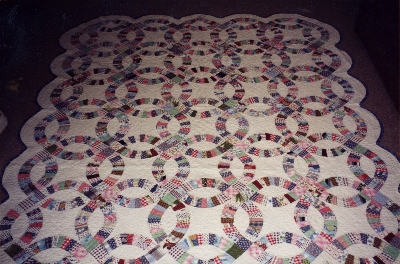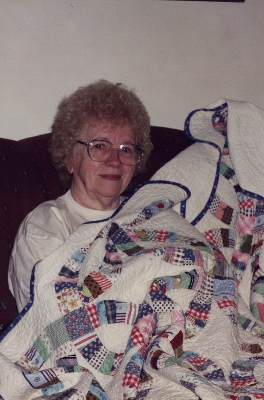Quilt No.416MC - Margery Creek

2160 x 1855mm
The quilt was made by Olive Goldie Dingley Creek (born 1924) in 1964 in Maryland USA. It was given to Gene (Eugene) and Margery Creek for a wedding gift and the quilt was brought to Australia in 1976 when the Creeks decided to live in Australia on a semi permanent basis. It is still used.
"Mountain Mist cotton batting was sold in a white paper bag, on the paper was printed a variety of quilt patterns. This pattern, however, was provided by my neighbour Viola Stottermeyer of western Maryland USA."[Olive Goldie Dingley Creek 27.9.97]
"This quilt was made as a technical challenge. The Home Makers' group/club were constructing Double Wedding Ring by hand. I decided that if you could put in a sleeve ie a curve you could construct Double Wedding Ring pieces by machine. And I did! This was the start of encouraging my mother to move away from utility quilts and concentrate on making pretty quilts.
My mother Estella Goldie Hendershot Dingley (1898-1976) made many quilts and quilt tops in her lifetime. Estella made 100 or so quilts and tops from this time on." [Olive Goldie Dingley Creek 27.9.97]

Related Quilts:
1950 x 1270mm
1601 x 1525mm
1400 x 400mm
2000 x 1450mm
1780 x 1700mm






